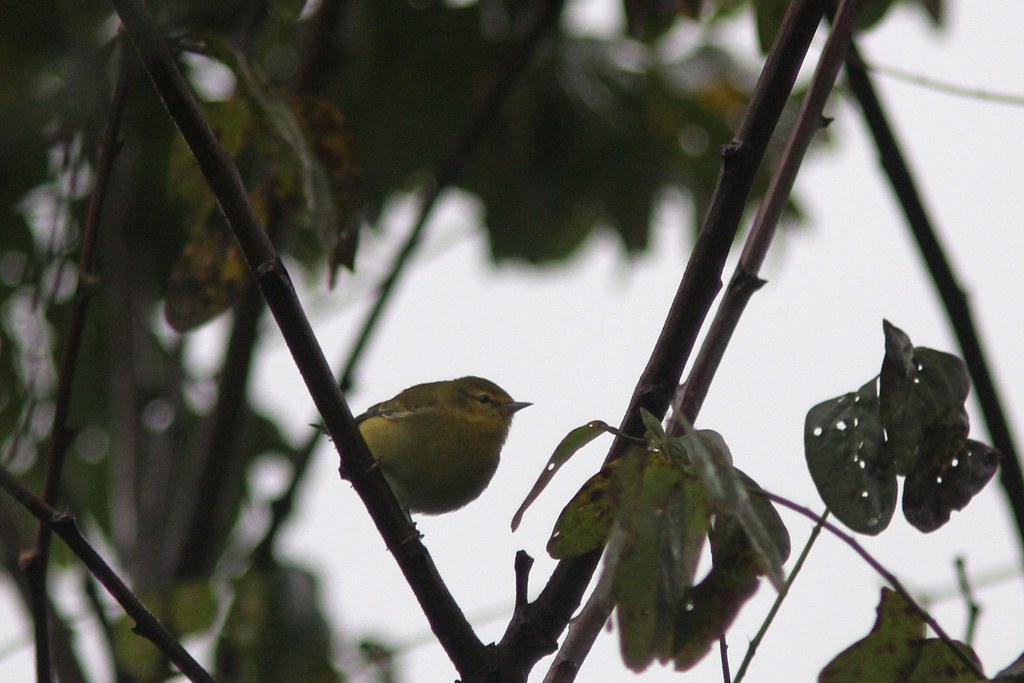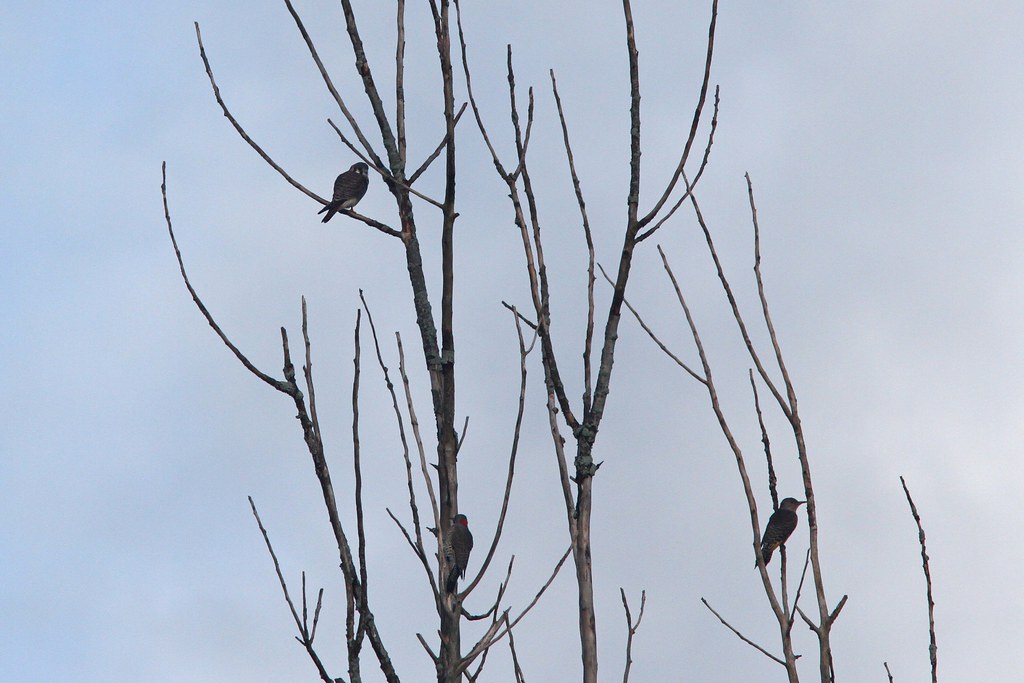 |
| Yellow Warbler, Silvio O. Conte NWR, Hadley, MA, Sep 22, 2013 |
 |
| Tennessee Warbler, Silvio O. Conte NWR, Hadley, MA, Sep 22, 2013 |
 |
| Philadelphia Vireo, Silvio O. Conte NWR, Hadley, MA, Sep 22, 2013 |
 |
| Cedar Waxwing, Silvio O. Conte NWR, Hadley, MA, Sep 22, 2013 |
 |
| American Kestrel with Northern Flickers, Silvio O. Conte NWR, Hadley, MA, Sep 22, 2013 |
 |
| Least Flycatcher, Silvio O. Conte NWR, Hadley, MA, Sep 22, 2013 |
 |
| Least Flycatcher, Silvio O. Conte NWR, Hadley, MA, Sep 22, 2013 |
 |
| Cedar Waxwings, Silvio O. Conte NWR, Hadley, MA, Sep 22, 2013 |
Although the forecast called for rain through the morning when I
woke up I checked the radar and saw the back edge of the rain was right along
route 91 and heading east at so I decided to try my luck in finding a
downed shorebird in the fields along the Connecticut River. Although the
chances were quite slim of finding a downed migrant due to all the strong south
winds preceding the rain I decided to try my luck anyway. I arrived in the
East Meadows just before dawn and the rain had indeed stopped with some clearing
to the west. Despite covering several fields I was only able to come up with a
single flyby American Golden Plover plus nine Killdeer for shorebirds. The
muddy roads here made access difficult or impossible to many areas that could
have been productive. I decided to not push my luck on the muddy roads here so
instead headed over to the honeypot in Hadley. No shorebirds in the honeypot
fields or along the various sandbars in the river. The corner in the honeypot
did produce at least 16 Indigo Buntings, three Lincoln's Sparrows together, a
Vesper Sparrow, and other sparrows plus Bobolinks overhead.
With little luck finding shorebirds I decided to head over to the Silvio O. Conte NWR to find some land birds. I covered a large portion of the roads and trails there and was joined in the later part of the morning with the Griffiths. Yet again a great morning for migrants with decent numbers and some unusual birds. The cloudy and breezy weather made for some tough viewing (and photo) opportunities but I managed a few marginal shots. The list for the morning is included below:
With little luck finding shorebirds I decided to head over to the Silvio O. Conte NWR to find some land birds. I covered a large portion of the roads and trails there and was joined in the later part of the morning with the Griffiths. Yet again a great morning for migrants with decent numbers and some unusual birds. The cloudy and breezy weather made for some tough viewing (and photo) opportunities but I managed a few marginal shots. The list for the morning is included below:
Turkey Vulture 4
Cooper's Hawk 1
Bald Eagle 1
Broad-winged Hawk 1
Red-tailed Hawk 2
Killdeer 1
American Woodcock 1 Flushed in same area twice
Rock Pigeon 22
Mourning Dove 4
Eastern Screech-Owl 1 calling
Ruby-throated Hummingbird 1
Red-bellied Woodpecker 2
Downy Woodpecker 4
Hairy Woodpecker 2
Northern Flicker 10
American Kestrel 1
Peregrine Falcon 1
Eastern Wood-Pewee 1
Least Flycatcher 1 Late, photos
Empidonax sp. 1 Different area from LEFL, seen briefly
Eastern Phoebe 12
Blue-headed Vireo 2
Philadelphia Vireo 1 Photos
Red-eyed Vireo 4
Blue Jay 16
American Crow 7
Common Raven 2
Black-capped Chickadee 10
Tufted Titmouse 3
White-breasted Nuthatch 2
House Wren 3
Carolina Wren 2
Ruby-crowned Kinglet 1
Eastern Bluebird 2
American Robin 4
Gray Catbird 23
Brown Thrasher 1
European Starling 17
Cedar Waxwing 22
Black-and-white Warbler 2
Tennessee Warbler 3 Yellowish 1st year bird, adult
Nashville Warbler 2
Common Yellowthroat 13
American Redstart 1
Northern Parula 4
Magnolia Warbler 8
Blackburnian Warbler 1
Yellow Warbler 4 Late, photos...variety of plumage
Blackpoll Warbler 7
Black-throated Blue Warbler 1
Palm Warbler (Yellow) 2
Pine Warbler 4
Yellow-rumped Warbler (Myrtle) 2
Black-throated Green Warbler 15
warbler sp. 5
Eastern Towhee 2
Field Sparrow 4
Song Sparrow 10
Swamp Sparrow 2
White-throated Sparrow 7
Scarlet Tanager 2
Northern Cardinal 3
Bobolink 4
Red-winged Blackbird 24
Brown-headed Cowbird 3
House Finch 6
American Goldfinch 2
The next several nights should bring in more migrants and move out
some of the birds currently here as the winds should be northerly through the
period.
The annual finch forecast is now out and it looks like the chances for a big irruption of most species is not expected as the feed to the north should be sufficient to not force the birds to move south. Luckily I ran across lots of irruptive species last winter. The full report is at the link below:
The annual finch forecast is now out and it looks like the chances for a big irruption of most species is not expected as the feed to the north should be sufficient to not force the birds to move south. Luckily I ran across lots of irruptive species last winter. The full report is at the link below:
No comments:
Post a Comment